ISSN ONLINE(2319-8753)PRINT(2347-6710)
ISSN ONLINE(2319-8753)PRINT(2347-6710)
J.Jeevitha1 and P.Thirumaraiselvan2
|
| Related article at Pubmed, Scholar Google |
Visit for more related articles at International Journal of Innovative Research in Science, Engineering and Technology
Wireless sensor networks have become increasingly popular due to their wide range of applications. Energy consumption is one of the biggest constraints of the wireless sensor node and this limitation combined with a typical deployment of large number of nodes has added many challenges to the design and management of wireless sensor networks. At high temperature the transmission power and sensitivity will decrease which leads to the degradation of wireless links. To avoid that we have implemented a hybrid routing protocol: Zonal-Stable Election Protocol (Z-SEP) for heterogeneous WSNs. In this protocol, some nodes transmit data directly to base station while some use clustering technique to send data to base station as in SEP. We implemented Z-SEP and compared it with traditional Low Energy Adaptive Clustering Hierarchy (LEACH) and SEP. In addition, that energy can be optimized by scheduling the node to sleep mode and alive mode. Simulation results showed that Z-SEP enhanced the stability period and throughput than existing protocols like LEACH and SEP.
Keywords |
| Wireless sensor networks, connectivity, energy saving, heterogeneous networks, scheduling. |
INTRODUCTION |
| Wireless sensor networks use low power transceivers to enable nodes to communicate at low energy cost. These transceivers are sensitive to temperature variations which affect both their transmission and reception capabilities. The effect of temperature has been validated independently by many researchers in the literature (e.g. [1] [2]), and documented in the data sheets of the low power radios (e.g. [3]). When temperature increases, both transmission power and sensitivity decrease which leads to the degradation of wireless communication links, and thus the overall connectivity of the network. As an example, a network designed to operate under typical conditions, i.e. a temperature of 25°C, will experience connectivity degradation when temperature increases above 25°C. Conversely, when temperature decreases below 25°C, wireless link quality improves, the network becomes over-dimensioned and some nodes can go to deep death mode without affecting the connectivity of the network. |
| Hierarchical scheduling protocols have been proved more energy efficient routing protocols. Several protocols are designed for homogeneous networks. LEACH [1] is one of the first clustered based routing protocols for homogeneous network. LEACH assigns same probability for all nodes to become cluster head. However, LEACH does not perform well in heterogeneous environment. Heterogeneity of nodes with respect to their energy level has also proved extra lifespan for WSNs. To improve efficiency of WSNs, SEP [2] was proposed. SEP is a two level heterogeneous protocol. SEP assigns different probability (to become cluster head) for nodes on the basis of their energy level. However, SEP does not use extra energy of higher level nodes efficiently. To send messages from nodes to base station we require minimum dissipation of energy. For such purpose a need of better routing protocol arises which should efficiently utilize energy. Classical approaches were insufficient to fulfil this demand. In this paper we have implemented a hybrid approach for transmitting data to base station. Some nodes send their data directly to base station and some uses clustering algorithm for transmitting data to base station. Our hybrid approach enhanced the stability period, network lifetime and also throughput of the network. |
| Paper is organized as follows. Section I explains about the Stability and Throughput of the sensor networks, Problem faced by using Traditional algorithm, Section II includes the related work that about the traditional protocol such as LEACH, SEP and also different routing protocol used in WSN, Section III discusses about protocols such as Z-SEP and AR-MAC used for comparison with Traditional Protocols. Section IV shows the comparison of three different protocols for calculating the Stability and Throughput of the network and Packet error rate calculation for AR-MAC and 802.11.4.Section V includes the conclusion of the result. |
RELATED WORK |
| In this section we describe our model of a wireless sensor network with nodes heterogeneous in their initial amount of energy. We particularly present the setting, the energy model, and how the optimal number of clusters can be computed. Let us assume the case where a percentage of the population of sensor nodes is equipped with more energy resources than the rest of the nodes. Let m be the fraction of the total number of nodes n, which are equipped with α times more energy than the others. We refer to these powerful node as advanced nodes, and the rest (1 − m) × n as normal nodes. We assume that all nodes are distributed uniformly over the sensor field. |
| A. Clustering Hierarchy |
| We consider a sensor network that is hierarchically clustered. The LEACH (Low Energy Adaptive Clustering Hierarchy) protocol [6] maintains such clustering hierarchy. In LEACH, the clusters are re-established in each “round.” New cluster heads are elected in each round and as a result the load is well distributed and balanced among the nodes of the network. Moreover each node transmits to the closest cluster head so as to split the communication cost to the sink (which is tens of times greater than the processing and operation cost |
| Initially each node can become a cluster head with a probability . On average, n × nodes must become cluster heads per round per epoch. Nodes that are elected to be cluster heads in the current round can no longer become cluster heads in the same epoch. The non-elected nodes belong to the set G and in order to maintain a steady number of cluster heads per round, the probability of nodes G to become a cluster head increases after each round in the same epoch. The decision is made at the beginning of each round by each node s G independently choosing a random number in [0, 1]. If the random number is less than a threshold T(s) then the node becomes a cluster head in the current round. The threshold is set as: |
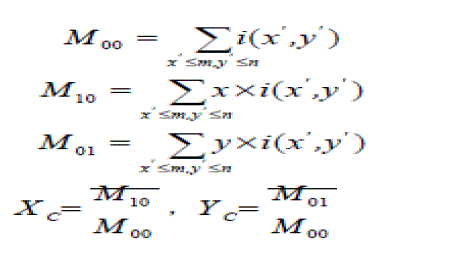 |
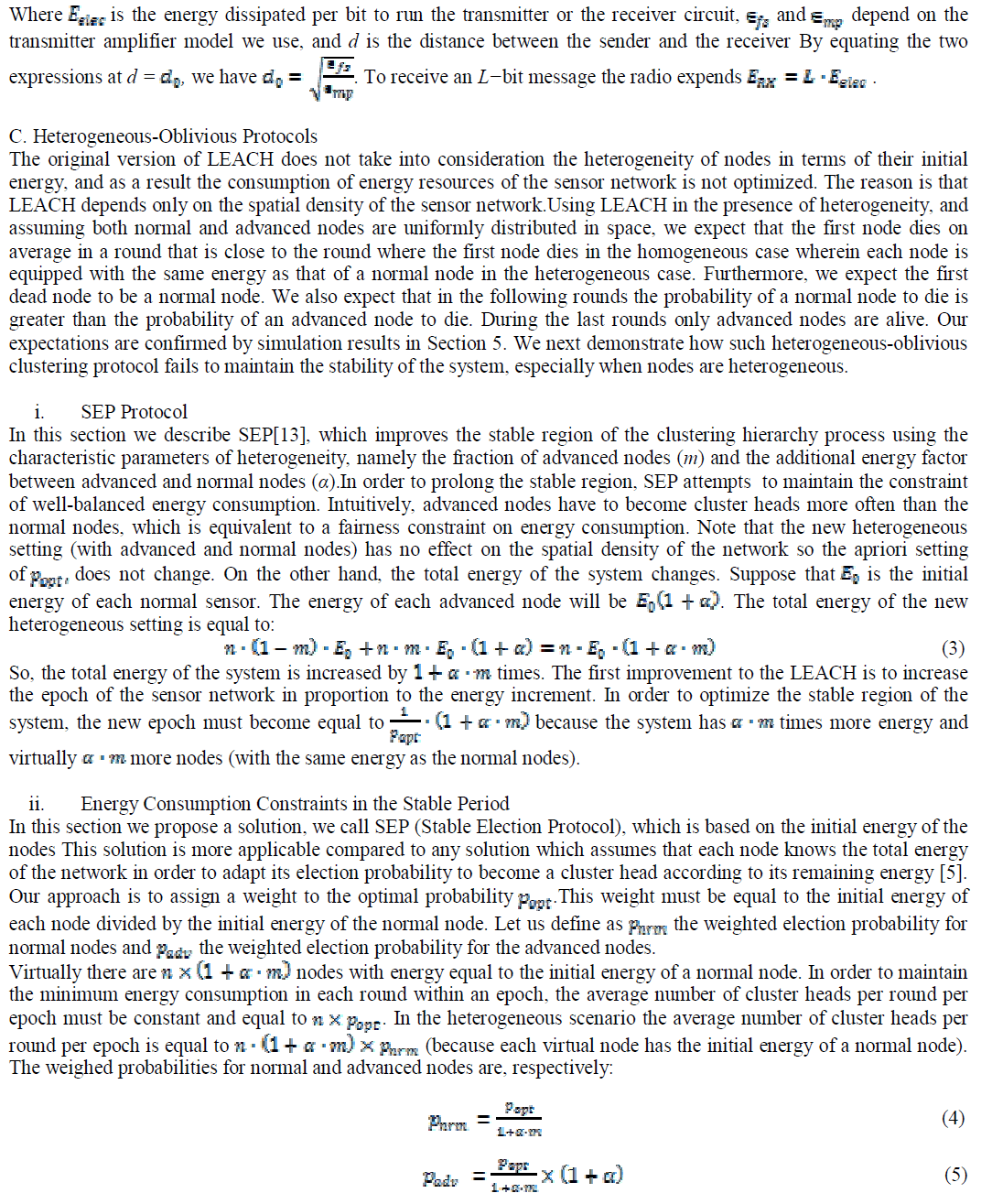 |
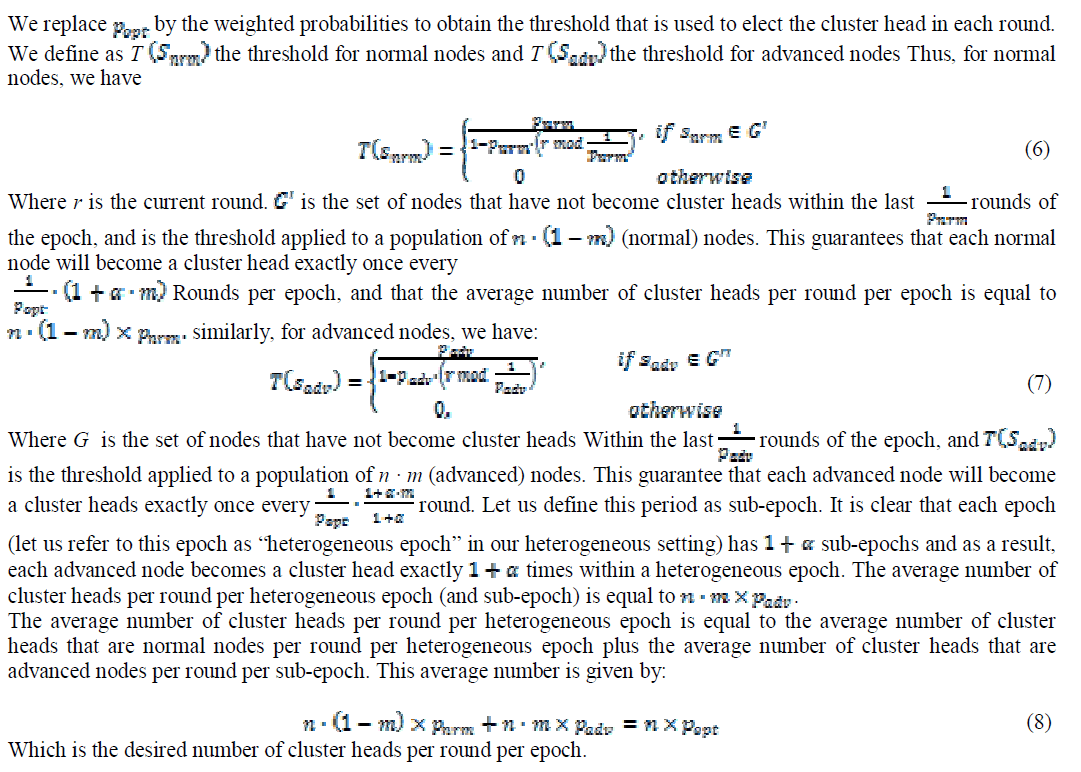 |
IMPLEMENTED ARCHITECTURE |
| A. Z-SEP Protocol |
| Zonal-Stable Election Protocol (Z-SEP) for heterogeneous WSNs. In this protocol, some nodes transmit data directly to base station while some use clustering technique to send data to base station as in SEP. We implemented Z-SEP and compared it with traditional Low Energy adaptive clustering hierarchy (LEACH) and SEP. Simulation results showed that Z-SEP enhanced the stability period and throughput than existing protocols like LEACH and SEP.Z-SEP uses two techniques to transmit data to base station. They are direct communication and Transmission via Cluster head[16]. |
| i. Direct Communication |
| Nodes in Zone 0 send their data directly to base station. Normal nodes sense environment gathers data of interest and send it data directly to base station. |
| ii. Transmission via Cluster head |
 |
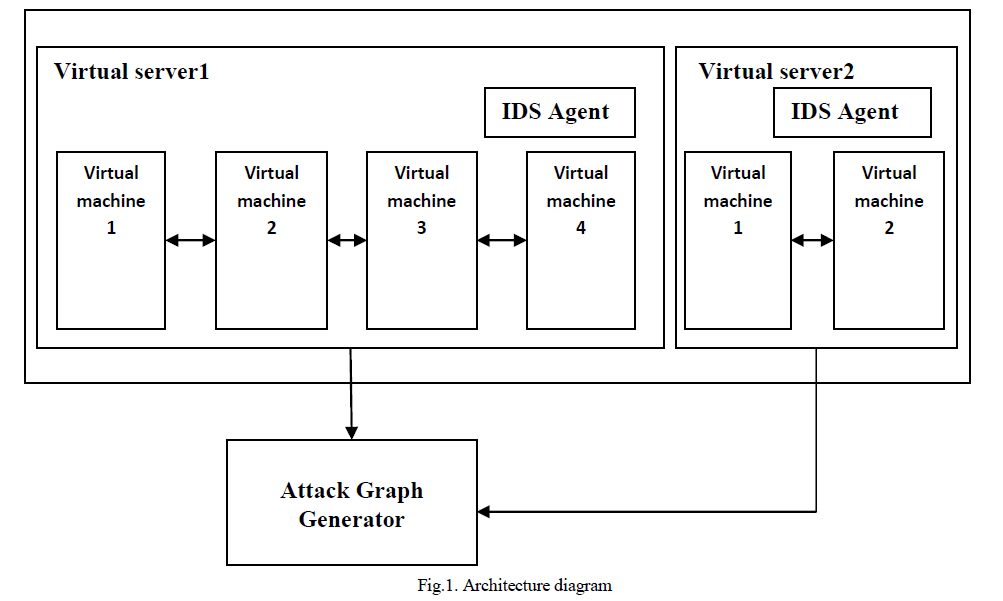 |
SIMULATION RESULTS |
| We compare the results of our protocol with SEP and LEACH. We have introduced heterogeneity in LEACH, with the same setting as in our proposed protocol, so as to access the performance of all the protocol in presence of heterogeneity. |
| Our goals in conducting simulation are |
| • To examine the stability period of LEACH, SEP and Z-SEP. |
| • We also examine the throughput of LEACH, SEP and Z-SEP. |
| SEP has weighted probability for selection of cluster head for both normal nodes and advance nodes. Z-SEP performs better than LEACH and SEP, because nodes in Zone 0 (normal nodes) communicates directly to base station while nodes in head zone 1 and head zone 2 communicates via cluster head to base station, As in clustering technique, cluster head consumes energy in the form of data aggregation and also by receiving data from nodes in the cluster. So this energy is conserved in normal nodes as they do not have to aggregate data and receive data from other nodes, so energy is not dissipated as that of cluster head, resulting the increase of stability period. |
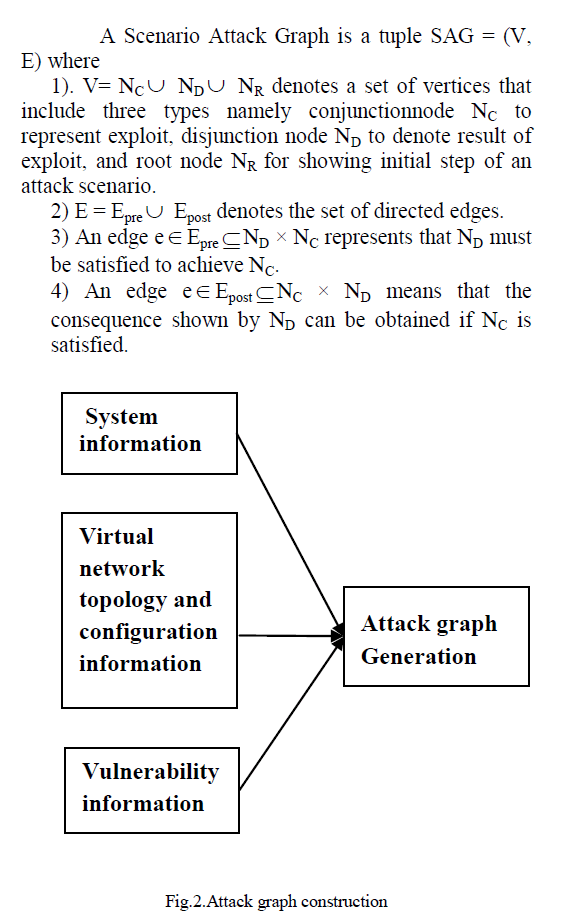 |
| Fig.2 shows the number of alive nodes against rounds. Fig.2 clearly shows that our protocol is enhanced from SEP and LEACH in terms of stability. As LEACH is very sensitive to heterogeneity so nodes die at a faster rate. SEP performs better than LEACH in two level heterogeneity, because SEP has weighted probability for selection of clusters. |
| The reason behind is that normal nodes have same amount of energy, they consume same amount of energy and they die almost at the same time as before, however network lifetime is increased because of the extra energy of advance nodes. Stability period of LEACH is decreased because LEACH is very sensitive to heterogeneity.LEACH does not have weighted probability as in SEP for even distribution of extra energy. In LEACH every node has equal chance to become cluster head so normal nodes die sooner than advance nodes. Fig. 5 shows the throughput of LEACH, SEP and Z-SEP. Throughput of Z-SEP is greater than LEACH and SEP although energy of advance node has been increased. |
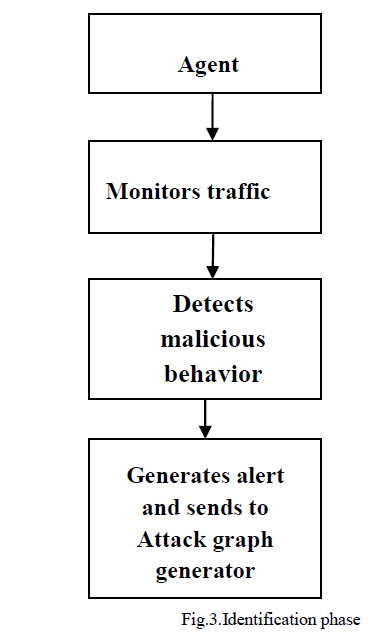 |
CONCLUSION |
| In this paper, we proposed Z-SEP for heterogeneous environment: two level heterogeneity. Normal nodes are to reduce the energy consumption and they transmit data directly to base station. Half of advanced nodes are uses clustering technique to transmit data to base station. Results have shown that the stability period is increased approximately 50%, by just altering the deployment of the different type of nodes in different zones according to their energy requirement. Throughput of Z-SEP is also increased compared with LEACH and SEP. |
References |
|